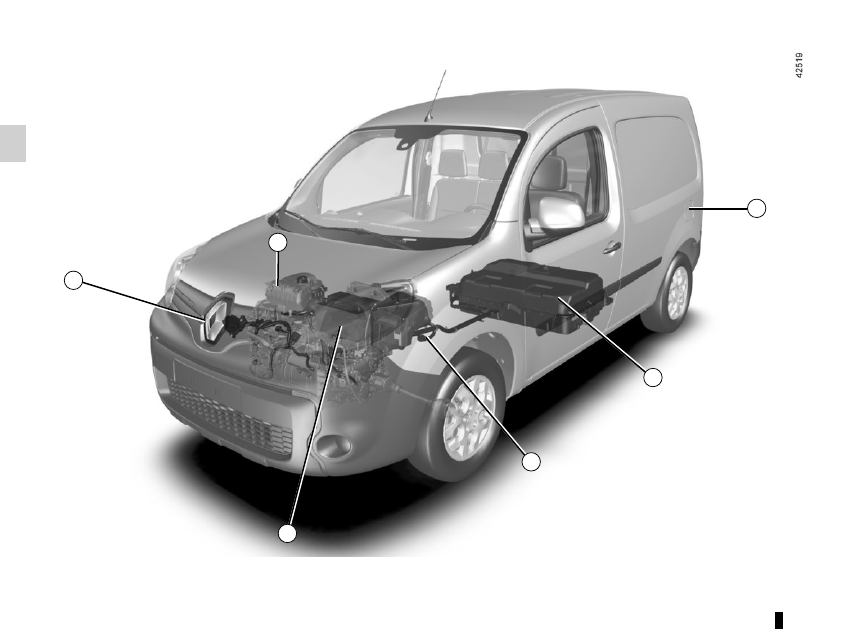Renault Kangoo Z.E. (2018 year). Manual - part 1

1.2
1 Electric motor
2 Fuel filler flap for additional heating
3 Traction battery
4 Orange electrical power cables
5 Secondary 12V battery
6 Electric charging connection
3
4
5
1
6
ELECTRIC VEHICLE: introduction
(1/6)
2